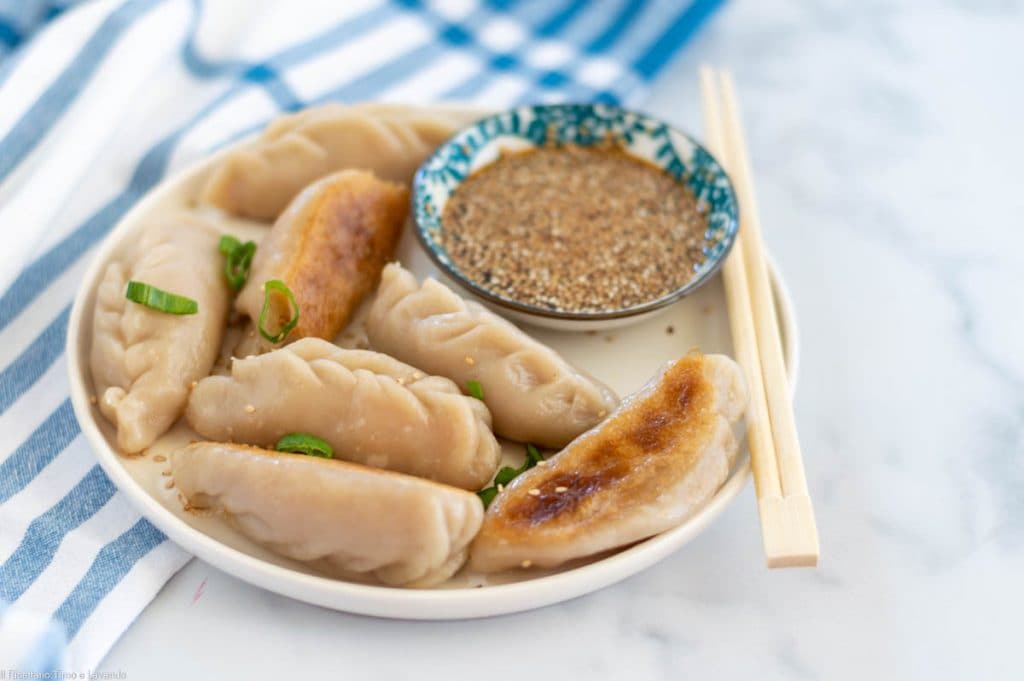
- Difficulty: Medium
- Cost: Cheap
- Rest time: 30 Minutes
- Preparation time: 1 Hour
- Cooking methods: Stovetop
- Cuisine: Japanese
Oriental Recipes
The Gyoza
are the descendants of the Chinese jiaozi. The exact origin of gyoza is unknown, but the dish’s popularity in Japan coincides with the return of soldiers from Manchuria during World War II. Many believe that soldiers brought back the recipe for this Chinese dish. There are several versions of these dumplings: Yaki gyoza, the most common version, are cooked in a pan with sesame oil to brown them and then with water to finish steaming, which is the version I propose in the recipe. There are also water or broth-boiled gyoza, and Age gyoza, which are fried.
are the descendants of the Chinese jiaozi. The exact origin of gyoza is unknown, but the dish’s popularity in Japan coincides with the return of soldiers from Manchuria during World War II. Many believe that soldiers brought back the recipe for this Chinese dish. There are several versions of these dumplings: Yaki gyoza, the most common version, are cooked in a pan with sesame oil to brown them and then with water to finish steaming, which is the version I propose in the recipe. There are also water or broth-boiled gyoza, and Age gyoza, which are fried.
are the descendants of the Chinese jiaozi. The exact origin of gyoza is unknown, but the dish’s popularity in Japan coincides with the return of soldiers from Manchuria during World War II. Many believe that soldiers brought back the recipe for this Chinese dish. There are several versions of these dumplings: Yaki gyoza, the most common version, are cooked in a pan with sesame oil to brown them and then with water to finish steaming, which is the version I propose in the recipe. There are also water or broth-boiled gyoza, and Age gyoza, which are fried.
Do you like my recipes? Then stay updated by following my Facebook page or Instagram profile.
Follow me also on Pinterest.

